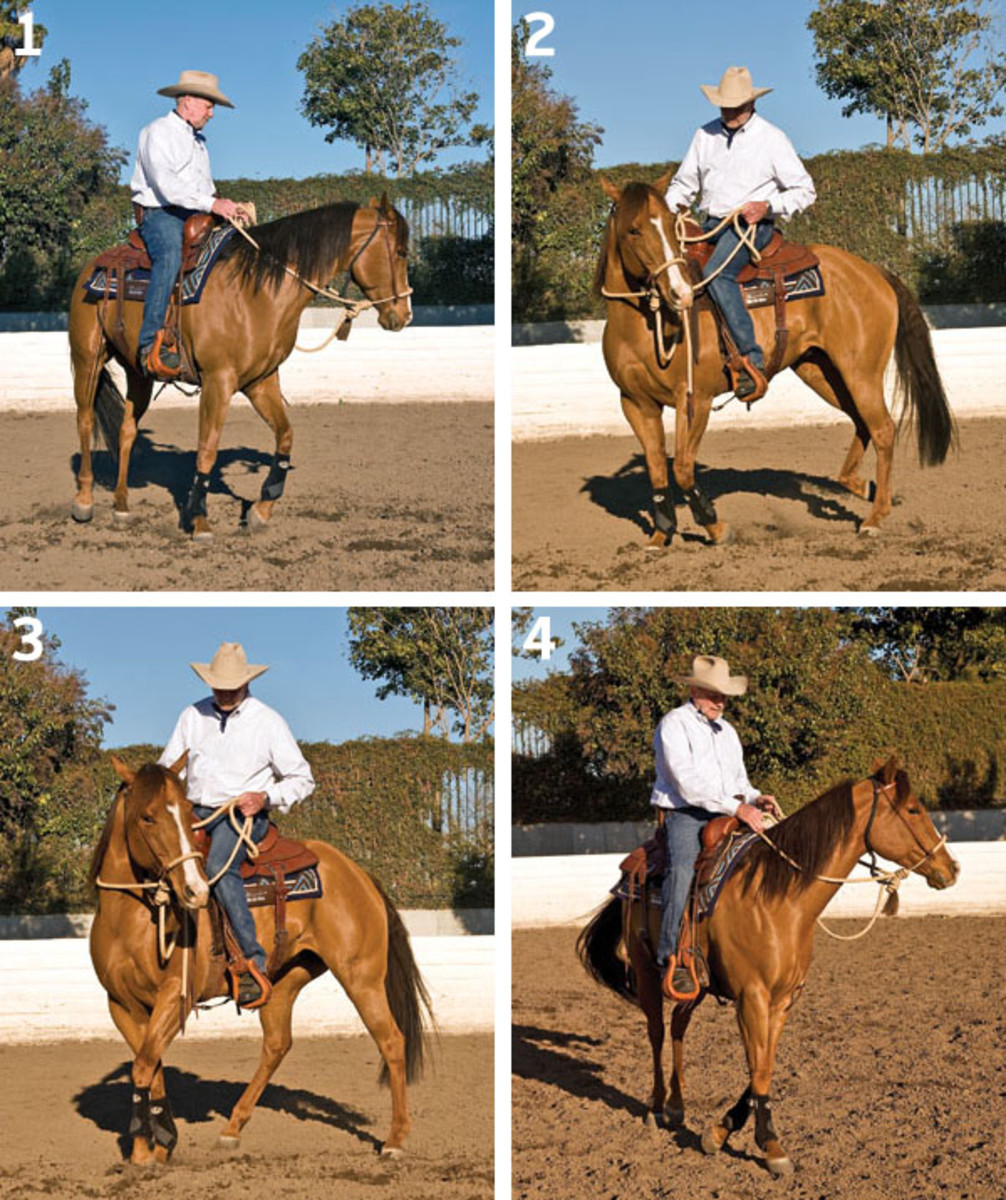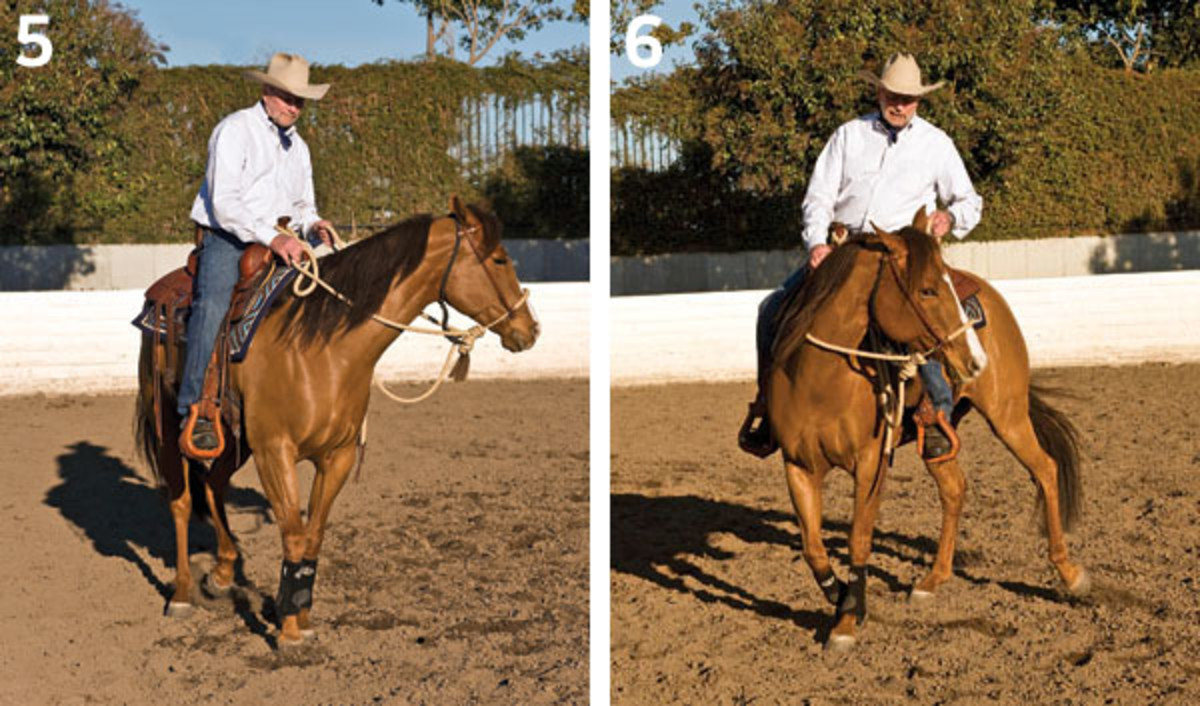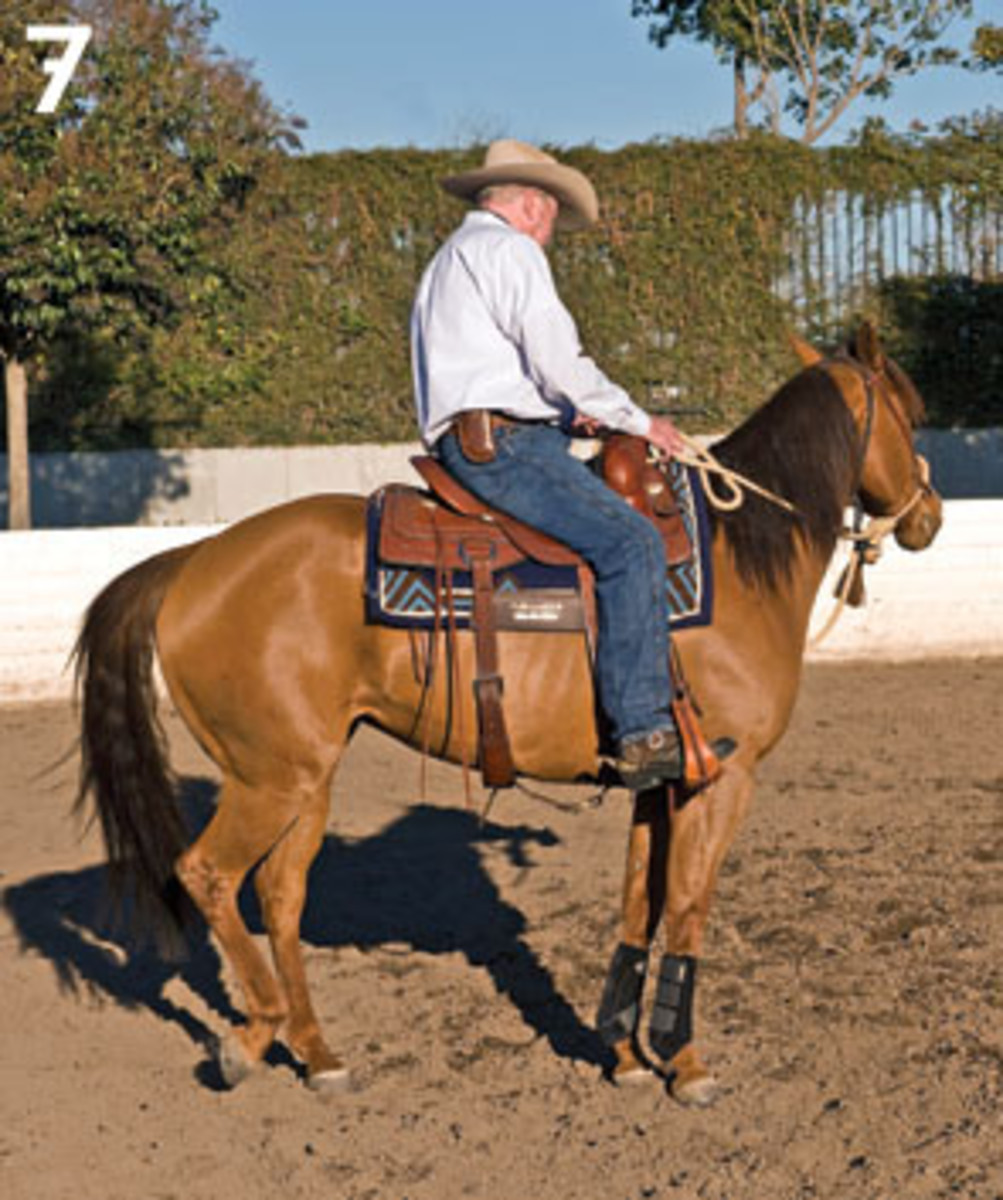Lesson Objective
If you compete: Hindquarters control is essential. You’ll need it to get polished performances for such maneuvers as picking up leads, making lead changes, and negotiating trail-class obstacles.
If you don’t: The ability to maneuver your horse’s hindquarters gives you better control of him overall. It’s imperative for safety issues, as well as for establishing and maintaining straightness, and for tasks as simple as opening and closing gates.
A horse has three parts to give you directional control: nose, shoulders, and hindquarters. The horse will follow his nose, then his shoulders, ending with his hips and hindquarters. In this hindquarters-control exercise, which you’ll perform on a circle in both directions, continual forward movement is key to your success. You’ll have to concentrate on maintaining it even as you ask your horse to move his hindquarters in a way that may be new to him. You’ll first develop proper hindquarters control at a walk, then develop it at a trot, and finally advance to a lope or canter.
As with any exercise, give your horse every chance to succeed. This includes having a solid sense of basic cues. Before you begin, your horse should have a reliable forward cue and be accepting of the bit and leg cues. Your horse also must yield readily to your hands. This hindquarters-control exercise can be performed in a hackamore or snaffle bit, or for a finished horse, a leverage bit.
1. Begin at a walk, riding a circle that’s 12 to 15 feet in diameter. Establish forward, relaxed, rhythmic motion. Keep the outside rein (also called the indirect or supportive rein) at the horse’s withers; this rein dictates how much bend is in the horse’s neck and also controls his speed. To initiate the exercise that develops hindquarters control, you’ll use a combination of cues (coming up in the next photos) to send the horse’s outside hip to the outside of the circle while still keeping the overall forward motion and rhythm consistent. If you lose forward movement, you’ll need to add pressure from your outside leg to encourage your horse to continue moving forward.

2. Though you must give leg cues first, you can’t see my other leg from this part of the sequence, so I’ll use this shot to describe what the rest of your aids must be. Keep your outside rein at the withers as you bring the inside rein back to your hip, asking your horse to yield his nose. (But don’t pull hard, as that would cause the horse’s outside shoulder to bulge out and force him to travel on a diagonal or lateral path.) Position your body in the direction you want the horse to go—left, in this case—by rotating your belly button in that direction. This will rotate your upper body and lower torso as well, which in turn will open your outside thigh and seatbone while closing the left thigh and seatbone. This puts your body in a position to direct and communicate with the horse and work with his movement instead of against it.
3. There are three spots to cue a horse with your legs. Become familiar with these aids and then be consistent in using them. Spot 1 is directly at the cinch, where leg pressure tells the horse to move his shoulders over. Spot 2 is about an inch farther back; pressure here tells the horse to leg-yield or sidepass. Pressure at Spot 3, yet another inch or so farther back, tells the horse to move his hindquarters over. To ask your horse to move his hips to the right, while circling left, give him this sequence of aids: left-leg pressure at Spot 3, then left rein back to the hip, and finally pressure on the left seatbone. Use outside-leg pressure as needed to maintain forward motion and rhythm.
4. This combination of aids tells your horse to step his left hip over to the outside of the circle, with that leg then crossing under him with each step. Your seat aids are important in asking for hindquarter control. However, it’s essential that you not lean into the circle or in the direction you’re asking of the horse. That position would put more pressure on the inside hip, which in turn, would tell the horse to move away far enough to push the circle or direction outward. You’ll need to be balanced, not just front to rear, but also from right to left.
5. As the horse’s hip moves over, his front feet should be active, moving in place for one-quarter of a turn. Don’t stop once this hip movement is achieved! Remember that this exercise is a continual forward movement, even after the hip moves over. If you lose forward movement, add pressure from your outside leg to encourage your horse to continue moving forward. Once the horse has executed the hindquarters movement, you must release the aids without delay. Release leg, seat, and rein aids, and immediately ask for forwardness again on the circle.

6. Troubleshooting: This is an example of the horse with too much bend in his neck—from the saddle, I can see the whole left side of his head. If you cause or allow this much bend, your horse will drop his outside shoulder and balance over it, which then will make it difficult to move his hip over. You’ll have to rebalance your horse on the original circle, with less bend in his neck, before attempting the exercise again.
7. Troubleshooting: Many horses will throw their heads up when you first ask for the hip to move over. Block this behavior with your outside rein, using a firm but soft feel. Hold your rein steady so that it encourages the horse to drop his head and not escape the request to lower his head.

CHARLES WILHELM. This trainer and clinician has been acclaimed for decades at equine expositions throughout North America. In addition to being the author of two books, Charles stars in a weekly television program on HRTV (DishTV Channel 404). His specialty is problem horses and educating the woman rider in excelling in horsemanship skills and overcoming fears. Charles Wilhelm Training (charleswilhelm.com) is based in Castro Valley, California.






